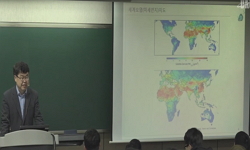Background: Studies have reported the associations between long-term exposure to ambient air pollution and lung cancer. However, there have been inconsistent reports of associations for lung cancer by histological type. We aimed to assess the associat...
http://chineseinput.net/에서 pinyin(병음)방식으로 중국어를 변환할 수 있습니다.
변환된 중국어를 복사하여 사용하시면 됩니다.
- 中文 을 입력하시려면 zhongwen을 입력하시고 space를누르시면됩니다.
- 北京 을 입력하시려면 beijing을 입력하시고 space를 누르시면 됩니다.
Air pollution and incidence of lung cancer by histological type in Korean adults : a Korean national health insurance service health examinee cohort study = Air pollution and incidence of lung cancer by histological type in Korean adults : a Korean national health insurance service health examinee cohort study
한글로보기https://www.riss.kr/link?id=A106520603
- 저자
- 발행기관
- 학술지명
- 권호사항
-
발행연도
2019
-
작성언어
-
- 주제어
-
KDC
500
-
자료형태
학술저널
-
수록면
486-486(1쪽)
- 제공처
-
0
상세조회 -
0
다운로드
부가정보
다국어 초록 (Multilingual Abstract)
Background: Studies have reported the associations between long-term exposure to ambient air pollution and lung cancer. However, there have been inconsistent reports of associations for lung cancer by histological type. We aimed to assess the association between long-term exposure to particulate matter less than or equal to 10 μm in a diameter (PM10) and nitrogen dioxide (NO2) and lung cancer incidence by histological subtype in South Korea. Methods: This population- based longitudinal study included 6,567,909 cancer-free subjects from the Korean National Health Insurance Service (NHIS) database for 2006-2007. We linked population data to National Cancer Center cancer registry data to confirm lung cancer incidence for 2006-2013. Individual exposure to PM10 and NO2 were assessed as 5-year average concentrations predicted at subjects’ district-specific home addresses for 2002-2007. We divided these exposures into two categories based on the 75th percentile. Cox proportional hazards models were used to estimate hazard ratios (HRs) of lung cancer incidence for the upper 25% exposure compared to the low 75% by histological subtypes at diagnosis, adjusting for potential confounders. (Figure 1) Results: Incident lung cancer was higher in male (n=21,912) than female (n=5,606). The incidence of lung cancer was higher in males, smokers, frequent exercisers or drinkers, and subjects with chronic obstructive pulmonary disease. Overall, we did not find increased risk of lung cancer with higher exposure of PM10 or NO2. However, a marginal association (P<0.10) was found for non-small cell carcinoma (HR=1.05, 95% CI=0.99-1.11). Specifically, high exposure to PM10 was associated with increased risk of adenocarcinoma in comparison with lower exposure in male smokers (HR=1.14, 95% CI=1.03- 1.25). (Table1) Conclusion: This study showed that long-term air pollution exposures were associated with elevated risk of lung adenocarcinoma in male smokers in Korea.
동일학술지(권/호) 다른 논문
-
The role and prospect of PPM (private public mix) project in Korea
- 대한결핵 및 호흡기학회
- 박재석
- 2019
-
- 대한결핵 및 호흡기학회
- 강영애
- 2019
-
Korean guidelines for treatment of drug-resistant TB, update
- 대한결핵 및 호흡기학회
- ( Doosoo Jeon )
- 2019
-
Fixed airway obstruction (FAO) may be redefine in COPD according to exacerbation
- 대한결핵 및 호흡기학회
- ( So-young Park )
- 2019





 KISS
KISS






